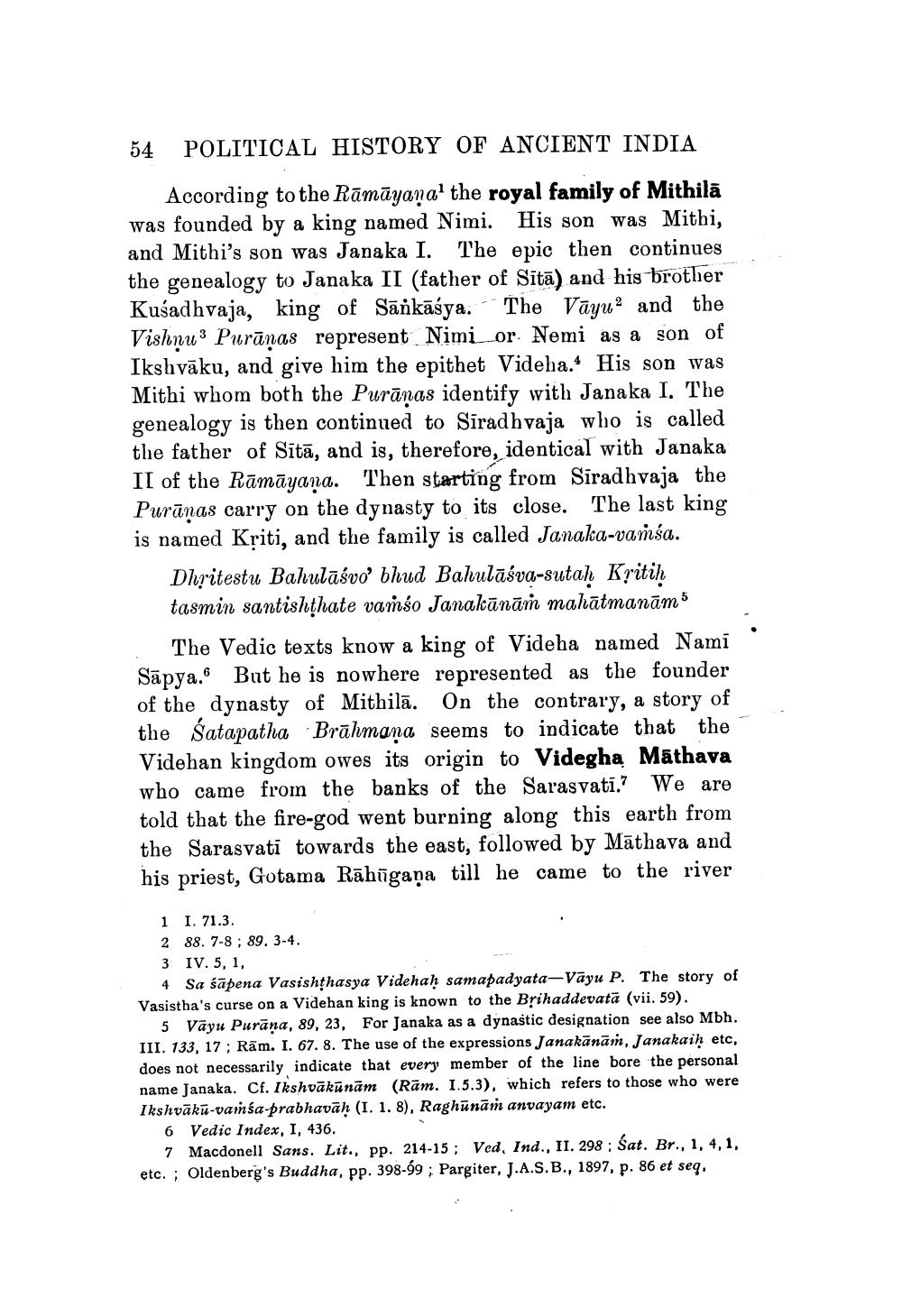________________
54 POLITICAL HISTORY OF ANCIENT INDIA
According to the Rāmāyanathe royal family of Mithilā was founded by a king named Nimi. His son was Mithi, and Mithi's son was Janaka I. The epic then continues the genealogy to Janaka II (father of Sītā) and his brother Kusad hvaja, king of Sānkāsya. - The Vayua and the Vishnu Purānas represent Nimior. Nemi as a son of Ikshvāku, and give him the epithet Videha. His son was Mithi whom both the Purānas identify with Janaka I. The genealogy is then continued to Sīradhvaja who is called the father of Sītā, and is, therefore, identical with Janaka II of the Rāmāyaṇa. Then starting from Siradhvaja the Purānas carry on the dynasty to its close. The last king is named Kriti, and the family is called Janaka-vamśa.
Dhritestu Bahulāśvo' bhud Bahulāśva-sutah Kritih tasmin santishthate vaṁso Janakānāṁ mahātmanām5
The Vedic texts know a king of Videha named Nami Sāpya. But he is nowhere represented as the founder of the dynasty of Mithilā. On the contrary, a story of the satapatha Brāhmaṇa seems to indicate that the Videhan kingdom owes its origin to Videgha Mathava who came from the banks of the Sarasvati.? We are told that the fire-god went burning along this earth from the Sarasvati towards the east, followed by Māthava and his priest, Gotama Rāhūgaņa till he came to the river
1 1. 71.3. 2 88. 7-8 ; 89. 3-4. 3 IV. 5, 1,
4 Sa śāpena Vasishthasya Videhah samapadyata—Vayu P. The story of Vasistha's curse on a Videhan king is known to the Brihaddevatā (vii. 59).
5 Vayu Purāna, 89, 23, For Janaka as a dynastic designation see also Mbh. III. 133, 17 ; Rām. I. 67. 8. The use of the expressions Janakānām, Janakaiḥ etc, does not necessarily indicate that every member of the line bore the personal name Janaka. Cf. Ikshvākūnām (Rām. 1.5.3), which refers to those who were Ikshvāku-vamśa-prabhavāh (I. 1. 8), Raghūnām anvayam etc.
6 Vedic Index, I, 436.
7 Macdonell Sans. Lit., pp. 214-15; Ved, Ind., II. 298 : Sat. Br., 1, 4, 1, etc.; Oldenberg's Buddha, pp. 398-99 ; Pargiter, J.A.S.B., 1897, p. 86 et seq.




